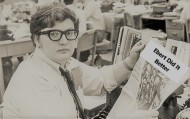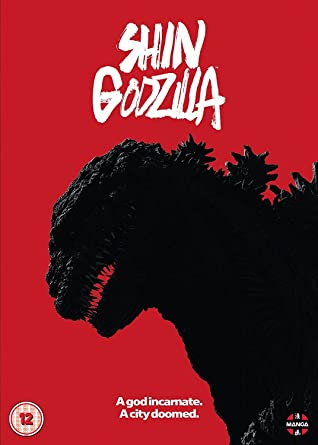Shin Godzilla (dubbed) (***1/2) pain and gain
Shin Godzilla is a movie both fantastic and frustrating.
 Ebert Did It Better: Gasbag Reviews
Ebert Did It Better: Gasbag Reviews
Movies / Music / Television Etc…
Shin Godzilla is a movie both fantastic and frustrating.

Directors Hideaki Anno, Shinji Higuchi
Screenplay Hideaki Anno
Starring Hiroki Hasegawa, Yutaka Takenouchi, Satomi Ishihara, Kengo Kora, Ren Osugi, Akira Emoto, Kimiko Yo, Jun Kunimura, Mikako Ichikawa, Pierre Taki, Takumi Saito, Keisuke Koide, Arata Furuta, Sei Hiraizumi, Kenichi Yajima, Tetsu Watanabe, Ken Mitsuishi, Kyūsaku Shimada, Kanji Tsuda, Issei Takahashi, Shinya Tsukamoto, Kazuo Hara, Isshin Inudo, Akira Ogata, Shingo Tsurumi, Suzuki Matsuo, Kreva, Katsuhiko Yokomitsu, and Atsuko Maeda
Shin Godzilla is a movie both fantastic and frustrating. The integration of modern and classic special effects looks wonderful at times. The camera angles are almost always interesting. The general principal of the story – that Japan deserves to decide its own fate – feels especially relevant, given the country’s history with catastrophe and radiation. There is a clear seriousness cast through the film, to the point where we know this really matters to them.
Then there’s goofy shit which is inexplicably woven throughout that feels like the burgeoning of a joke. The viewer is being played, or Japan is playing one on themselves. Either way, Shin Godzilla is a mixture of the elements enough to wish someone could have made at least 1/4 of the film edited for brevity and pace.
The story, a mad nuclear scientist named Maki leaves the trail of evidence for a monster he helps to create in a boat in a harbor. As they investigate the boat, a creature is born with a big splash. Immediately the government convenes to discuss the event and what it might be. This goes on for a while…
Shin Godzilla is exposition heavy. This makes for a painful experience when watching so many conversations that are dubbed. Some of the voices work, others are horrible. Some of the translation works. Other feels out of place. I am no expert on Japanese cinema, culture or storytelling. I cannot venture if it doesn’t work, or I just don’t enjoy what I don’t understand.
What I do understand is the film does have way too many characters, and those characters spend much of the film rehashing decisions and debating new ones, all while the character of Godzilla emerges, then evolves, disappears, emerges, evolves again, etc.
The first version of the monster would look okay, were it not for the eyes that seem to be taken right off of a kids toy and glued on its head. They take a long time to get to the point of showing this version of the monster in all of its glory. And it is glorious, except for those eyes.

At this point plans start revving up in multiple places. They attack the monster, then resume planning as it recovers. They get offers of “help” from the United States, among other countries. Ultimately, they choose to work the problem on their own while they have a chance.
The silliness of authorizing an attack on the monster, then having the prime minester once more authorizing “the use of force” a few minutes later is funny. Then, minutes later, they ask if they can use missles.
“I authorize the use of all weapons,” the PM says.
Thank you. Let’s hope that its the last time they ask.
Let’s hope they don’t have to get a new Prime Minister before the end.

Another source of amusement within the beautifully played choreography of chaos is how there is a constant labelling of scenes, down to a half second splash where someone is shouting out orders. Why do we need to know all of this information. I posit that we don’t. I’m not necessarily needing that much detail, but who knows, maybe there’s someone out there who needs to know that 2nd Tank Battalion Leader Murasaki ordered “All tanks retreat now!” It’s the only time we see him in the film. I hope the rest of the characters heard him.

That said, there is still some astounding action sequences woven between the endless amounts of exposition. If one can hang with all of the talking, there are some interesting concepts we’re asked to grasp from within the chatter. Some of the clever animation is just showing off, like this scene where researchers study the formula of Maki’s riddle. It’s a nice scene that takes one too many victory laps passing the computer from person to person endlessly as they all have the same intrigued look on their faces.

Dubbed such as it is, it’s difficult to know whether or not any of the actors did a great job. I would have preferred hearing their real voices and getting subtitles. I can say that there are many beautiful faces, male and female, gracing the screen. None more beautiful than Ishihara, who plays an American envoy and future contender for president. She’s got my vote.

The dialogue, as dubbed, is confusing at times. Again, not sure if its a cultural thing, or just lost in translation. Either way, it’s a source of frustration that comes up way more often than it should. If they’d either found a way to curb all of the talking scenes, or more smoothly integrated them, it would be a fantastic film.
Even so, this film is still better than either of the Godzilla films that have come out in the US in the last decade. That’s probably as it should be, given the historical and cultural significance of the character. I would prefer a streamline version of this film over watching either of those films any day.
(***1/2 out of *****)